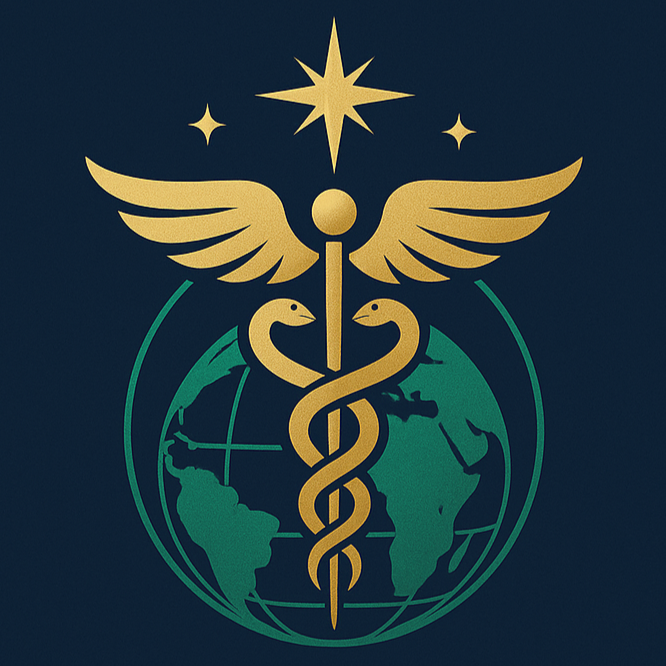Regenerative Medicine 再生醫學簡介
🧬 Introduction to Regenerative Medicine
Regenerative medicine is a field that harnesses the body's natural healing capabilities to restore, repair, or replace damaged tissues and organs. It aims to recover normal function and offers hope for conditions that traditional treatments may not effectively cure. This field integrates stem cell technology, tissue engineering, biomaterials, and gene therapy.
🔬 Main Therapies and Applications
1. Stem Cell Therapy
-
Description: Uses pluripotent or multipotent stem cells (e.g., mesenchymal stem cells [MSCs], hematopoietic stem cells [HSCs]) to promote tissue regeneration.
-
Applicable Conditions:
-
Degenerative joint diseases (e.g., osteoarthritis)
-
Neurological disorders (e.g., Parkinson's disease, spinal cord injuries)
-
Cardiovascular disease (e.g., post-myocardial infarction repair)
-
Chronic wounds (e.g., diabetic ulcers)
-
Autoimmune diseases (e.g., lupus)
-
2. Tissue Engineering
-
Description: Combines scaffolds, cells, and growth factors to fabricate artificial tissues.
-
Applications:
-
Artificial skin for burn patients
-
Engineered cartilage, bladder, and trachea
-
Future development: artificial liver, kidney, and other complex organs
-
3. Cell Therapy
-
Description: Involves the use of various cells (not limited to stem cells) such as immune cells, especially in combination with immunotherapy.
-
Applications:
-
Cancer immunotherapy (e.g., CAR-T cell therapy)
-
Immune modulation after organ transplantation
-
Reproductive medicine (e.g., endometrial regeneration)
-
4. Gene Editing and Gene Therapy
-
Description: Uses advanced technologies like CRISPR to correct defective genes or enhance regenerative capacity.
-
Applications:
-
Genetic diseases (e.g., thalassemia)
-
Enhancement of regenerative function (often used with stem cells)
-
5. Biomaterials and Regenerative Scaffolds
-
Description: 3D printing and biomaterials are used to create biodegradable scaffolds that support cell growth and tissue formation.
-
Applications:
-
Bone repair
-
Vascular regeneration
-
Temporary structures in organ reconstruction
-
🌍 Global Applications and Trends
Countries such as South Korea, Japan, Taiwan, and the United States are actively advancing regenerative medicine through clinical trials and regulatory frameworks. Key areas include:
-
Post-surgical recovery for cancer patients
-
Degenerative joint disease treatment
-
Reproductive medicine and uterine regeneration
-
Pre-transplant organ repair support
⚠️ Important Considerations
-
Many regenerative therapies are still experimental and must be administered in certified clinical institutions.
-
Scientific validation is ongoing, so patients should consult licensed medical professionals.
-
For medical tourism, ensure that treatments are legal and institutions are properly accredited.
🧬 再生醫學(Regenerative Medicine)簡介
再生醫學是一門利用身體自身的修復能力來重建、修復或替代受損組織與器官的醫學領域。目的是恢復正常功能,治療傳統療法無法有效治癒的疾病。這一領域整合了幹細胞科技、組織工程、生物材料與基因治療等先進技術。
🔬 主要治療方式與應用
1. 幹細胞治療(Stem Cell Therapy)
-
說明:使用多能性幹細胞(如間質幹細胞 MSC、造血幹細胞 HSC 等),促進組織再生。
-
應用疾病:
-
骨關節退化(如膝關節炎)
-
神經系統疾病(如帕金森氏症、脊髓損傷)
-
心臟病(如心肌梗塞後修復)
-
糖尿病引起的傷口難癒
-
自體免疫疾病(如紅斑性狼瘡)
-
2. 組織工程(Tissue Engineering)
-
說明:利用支架(scaffolds)、細胞與生長因子製造人工組織。
-
應用:
-
人工皮膚(燒燙傷後使用)
-
人工軟骨、膀胱、氣管
-
未來研發方向包括人工肝臟、腎臟等複雜器官
-
3. 細胞療法(Cell Therapy)
-
說明:除了幹細胞,也包含T細胞、免疫細胞等,尤其與免疫療法結合發展迅速。
-
應用:
-
癌症免疫療法(如CAR-T細胞治療)
-
移植後免疫調節
-
生殖醫學(如子宮內膜修復)
-
4. 基因編輯與基因治療(Gene Editing / Gene Therapy)
-
說明:結合CRISPR等工具修復致病基因,或提升細胞再生能力。
-
應用:
-
遺傳性疾病(如地中海型貧血)
-
再生能力提升(與幹細胞聯合使用)
-
5. 生物材料與再生支架(Biomaterials & Scaffolds)
-
說明:3D列印技術與生物材料共同應用,創建可生物降解的組織支架,協助細胞生長與組織重建。
-
應用:
-
骨骼修復
-
血管再生
-
臟器再建中的過渡性結構
-
🌍 國際應用趨勢
-
韓國、日本、台灣、美國等地均在推動再生醫學臨床試驗與法規建制,特別是:
-
癌症術後修復
-
退化性關節疾病
-
生殖醫學與子宮再生
-
器官移植前的輔助修復療法
-
⚠️ 注意事項
-
多數再生醫學治療屬於實驗性療法,需在合格臨床機構接受治療。
-
一些治療仍需進一步科學驗證,患者應尋求合格醫師建議。
-
跨國醫療旅遊者應確認治療是否合法、機構是否獲得認證。

